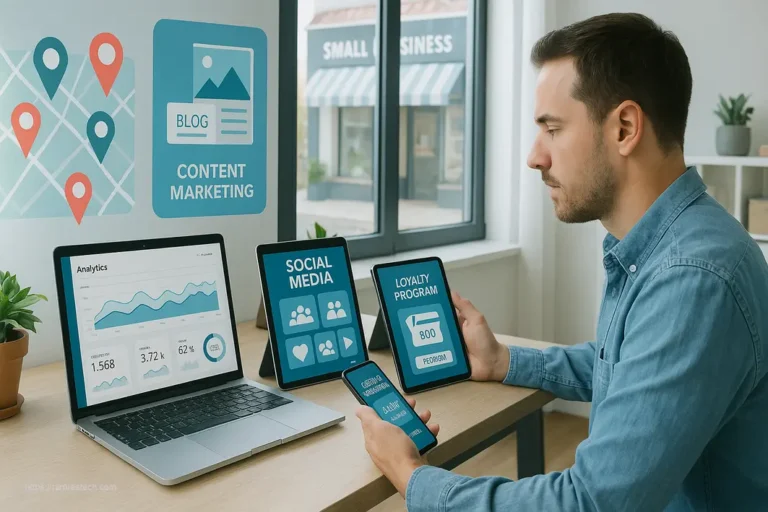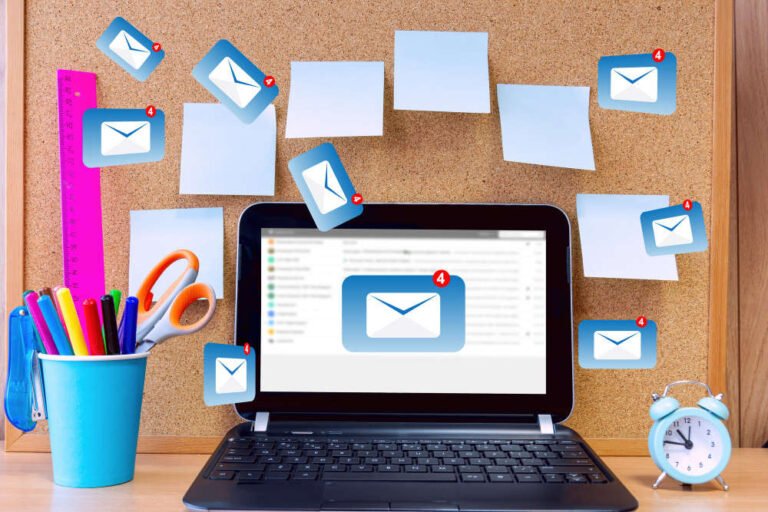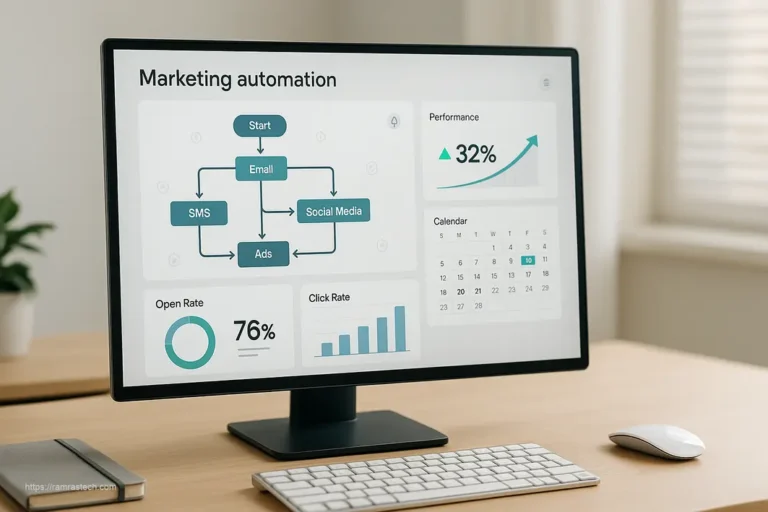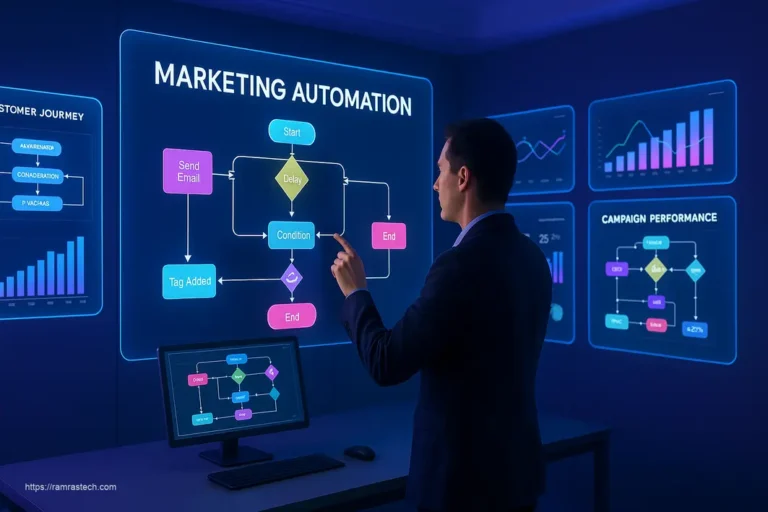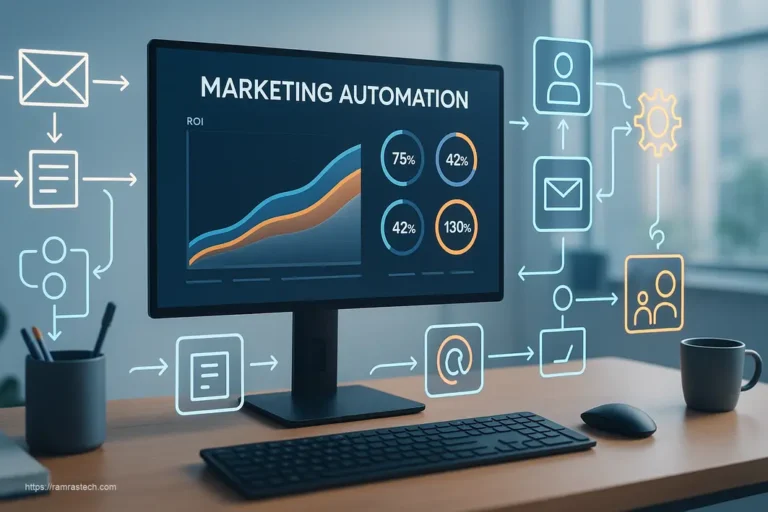Revolutionize Your Marketing Automation in 7 Steps
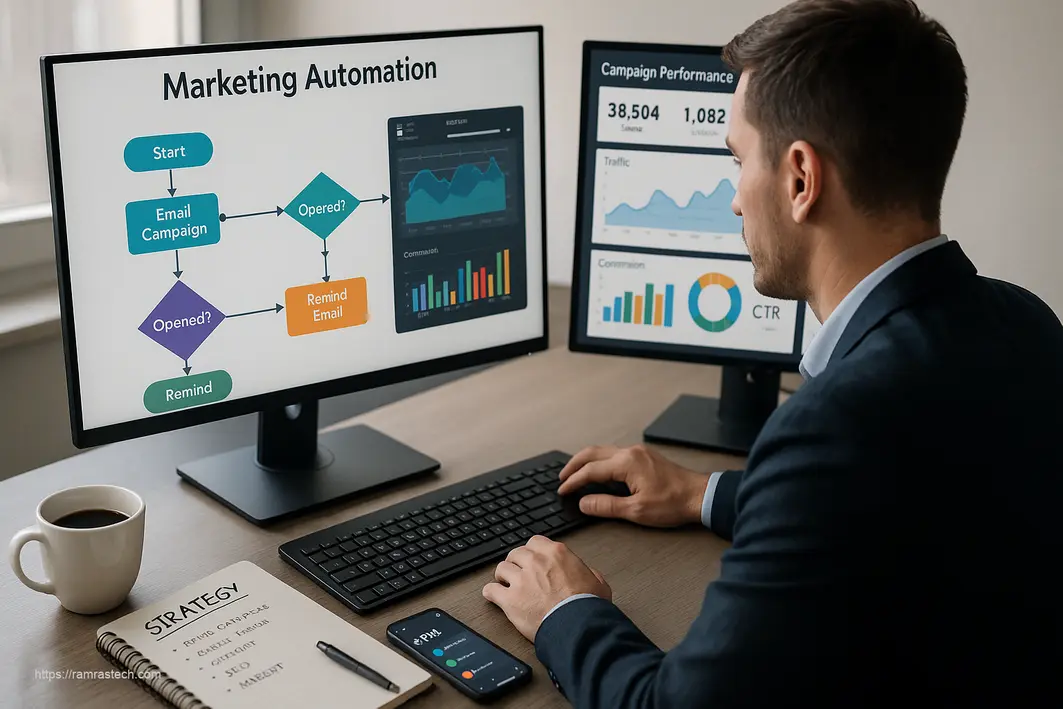
Ever felt like you’re drowning in marketing tasks, constantly juggling email campaigns, social media posts, and lead nurturing sequences? You’re not alone. In today’s hyper-connected world, marketers are expected to deliver personalized experiences across multiple channels—all while tracking performance and proving ROI. This is where marketing automation comes to the rescue, transforming how businesses connect with customers and drive growth.
What Is Marketing Automation and Why Does It Matter Now?
Marketing automation refers to software platforms that streamline, automate, and measure marketing tasks and workflows. Instead of manually sending every email or posting each social update, these tools help you set up intelligent processes that run in the background—freeing you to focus on strategy rather than execution.
But this isn’t just about working smarter. With consumers now expecting hyper-personalized experiences and businesses facing mounting pressure to demonstrate marketing impact, marketing automation has evolved from a nice-to-have into a must-have technology.
The numbers speak for themselves:
- Companies using marketing automation see a 14.5% increase in sales productivity and a 12.2% reduction in marketing overhead
- 80% of marketers report increased leads through automation
- 77% of companies see higher conversion rates after implementing automation tools
Let’s explore how you can develop a strategic approach to marketing automation that drives meaningful business results.
Step 1: Assess Your Current Marketing Ecosystem
Before diving headfirst into automation, take a step back and evaluate your existing marketing landscape. This critical first step ensures your automation strategy addresses actual needs rather than creating tech for tech’s sake.
Start by asking:
- Which marketing processes are currently manual and time-consuming?
- Where do leads tend to get stuck in your funnel?
- What customer data are you collecting, and is it accessible across your organization?
- How effectively are you nurturing leads through the buyer’s journey?
This assessment often reveals eye-opening insights. One mid-sized B2B company I worked with discovered they were spending 15+ hours weekly manually sending follow-up emails—time that could have been reclaimed through automation. Another realized their sales team was receiving leads but had no structured way to prioritize them.
The goal here isn’t just to identify inefficiencies but to understand how marketing automation can enhance what’s already working while fixing what isn’t.
As our friends at Axelerant note, “A thorough assessment helps identify opportunities where automation can maximize efficiency and effectiveness while ensuring your strategy remains customer-centric.”
Step 2: Define Clear, Measurable Goals
Automation without direction is just expensive software gathering digital dust. Your marketing automation strategy needs to be anchored by specific goals aligned with broader business objectives.
The most effective goals for automation initiatives follow the SMART framework:
- Specific: “Increase MQL to SQL conversion rate” rather than “improve leads”
- Measurable: “Grow email engagement by 25%” instead of “get better email results”
- Achievable: Set realistic targets based on industry benchmarks and your baseline
- Relevant: Directly tied to business KPIs like revenue, customer acquisition, or retention
- Time-bound: Include deadlines like “within 6 months of implementation”
Here are some strategic automation objectives that have proven successful:
- Increase lead-to-customer conversion rate by 20% in the next quarter
- Reduce customer acquisition cost by 15% within six months
- Improve customer retention by 10% through automated nurture campaigns
- Decrease sales cycle length by 30 days using automated lead scoring and qualification
Each objective should directly connect to how automation will deliver tangible business value. This clarity helps secure buy-in from leadership and provides benchmarks to measure success.
Step 3: Select the Right Marketing Automation Platform
With dozens of marketing automation platforms available, finding your perfect match requires careful consideration of your specific needs, goals, and constraints.
Key Features to Evaluate:
- Core Functionality: Email marketing, lead scoring, workflow automation, landing pages
- Integration Capabilities: How easily does it connect with your CRM, website, and other tools?
- Scalability: Can it grow with your business and increasing data volumes?
- User Experience: Is it intuitive enough for your team to adopt without extensive training?
- Analytics and Reporting: Does it provide actionable insights on campaign performance?
- Personalization Capabilities: How sophisticated is its ability to deliver tailored content?
- Budget Alignment: Does the value justify the cost for your specific needs?
Popular platforms include HubSpot, Marketo, Mailchimp, ActiveCampaign, and Pardot—each with distinct strengths and ideal use cases. For instance, Hubspot offers an all-in-one solution with excellent CRM integration, while Marketo provides enterprise-grade features with advanced analytics capabilities.
When the team at Blue Atlas Marketing selected their automation platform, they prioritized finding a solution that “not only managed email campaigns effectively but also provided robust lead scoring and website tracking capabilities to create a unified customer view.”
Don’t rush this decision. Many organizations find it helpful to create a decision matrix with weighted criteria based on their unique priorities. Consider requesting demos or trial periods to see how each platform performs with your actual data and use cases.
Step 4: Develop an Integrated Multi-Channel Strategy
The true power of marketing automation emerges when it orchestrates seamless customer experiences across all touchpoints—email, social media, website, ads, and more.
Think beyond simple email sequences. Modern automation excels at creating holistic journeys that adapt based on how prospects engage with your brand across different channels.
For example:
- A visitor downloads a whitepaper from your website
- This triggers an email sequence with related content
- If they click specific links in those emails, they’re added to a custom audience for targeted social ads
- When they revisit your site, personalized content appears based on their interests
- After multiple high-intent actions, a notification is sent to sales for personal follow-up
This kind of interconnected approach delivers what Adobe calls “an omnipresent and consistent brand experience” that significantly boosts conversion rates and customer satisfaction.
The key here is thinking in terms of customer journeys rather than isolated campaigns. Map out each stage of your funnel and identify how automation can create logical progressions between touchpoints.
For one retail client, implementing cross-channel automation led to a 32% increase in purchase frequency and a 27% boost in average order value—simply by ensuring consistent, relevant messaging as customers moved between email, social media, and the website.
Step 5: Master the Art of Marketing Personalization at Scale
Today’s consumers expect personalized experiences. In fact, 80% are more likely to purchase from brands that provide personalized interactions. However, delivering this level of tailoring manually is impossible at scale.
This is where marketing automation truly shines—enabling hyper-personalization without requiring an army of marketers.
Effective personalization through automation goes far beyond inserting a customer’s name in an email. It involves:
-
Behavioral Triggers: Automating content delivery based on specific actions (page visits, content downloads, product views)
-
Dynamic Content: Showing different images, offers, or messaging based on user attributes or behaviors
-
Predictive Personalization: Using AI and machine learning to anticipate needs and predict next best actions
-
Customer Journey Staging: Adapting content based on where someone is in their buying process
-
Cross-Channel Consistency: Maintaining personalized messaging across touchpoints
One B2B software company implemented behavior-based personalization that automatically adjusted email content based on which product features prospects had explored on their website. This targeted approach increased demo requests by 41% compared to their previous generic nurture campaigns.
As Impression Digital explains, “Effective personalization doesn’t just increase engagement—it builds trust by demonstrating that you understand your customers’ specific needs and challenges.”
Step 6: Implement Robust Analytics and Continuous Optimization
Marketing automation generates mountains of valuable data. The organizations that excel use this information to continuously refine their approach.
Start by establishing clear KPIs for each automated workflow:
- For lead nurturing sequences: conversion rates, time-to-conversion, engagement metrics
- For onboarding flows: completion rates, feature adoption, time-to-first-value
- For retention campaigns: churn prevention rate, upsell/cross-sell success, satisfaction scores
Then implement a regular review cycle to analyze performance and identify optimization opportunities:
- A/B Test Everything: Subject lines, content, send times, workflow logic
- Refine Segmentation: Continuously improve how you group customers for targeted messaging
- Optimize Trigger Points: Adjust when and how automated sequences are initiated
- Update Content: Refresh messaging based on performance data and changing customer needs
- Enhance Scoring Models: Regularly review lead scoring criteria against actual conversion data
For example, one financial services company discovered through testing that their leads responded best to educational content delivered over a longer period rather than product-focused messaging with urgent calls-to-action. This insight led them to redesign their automation flows, resulting in a 35% improvement in qualified lead generation.
Remember what Salesforce emphasizes: “Analytics aren’t just about measuring past performance—they’re about informing future strategy and creating a cycle of continuous improvement.”
Step 7: Future-Proof Your Automation Strategy
The marketing automation landscape evolves rapidly, with new capabilities emerging constantly. Future-proofing your strategy ensures you maintain competitive advantage as technology advances.
Key trends reshaping marketing automation include:
AI and Predictive Analytics
Artificial intelligence is revolutionizing automation by enabling predictive recommendations, intelligent segmentation, and automated content optimization. Platforms with robust AI capabilities can now predict which leads are most likely to convert, recommend next-best-actions, and even generate personalized content.
Conversational Marketing
Chatbots and virtual assistants are increasingly integrated with marketing automation platforms, enabling real-time engagement that flows seamlessly into automated nurture sequences. This creates more natural interaction points while still benefiting from automation’s scalability.
As highlighted by the Digital Marketing Institute, “Conversational interfaces are transforming how automation works, making it more interactive rather than purely linear.”
Enhanced Privacy Compliance
With regulations like GDPR and CCPA changing how customer data can be collected and used, future-ready automation needs to incorporate privacy by design. This means preference management, consent tracking, and data governance must be core elements of your automation strategy.
Cross-Platform Integration
The most sophisticated automation strategies connect marketing with sales, customer service, and product usage data. This holistic approach creates truly seamless customer experiences and more accurate targeting.
To stay ahead of these trends:
- Allocate resources for ongoing learning and experimentation
- Build flexibility into your automation infrastructure
- Prioritize platforms with regular innovation and strong development roadmaps
- Create a cross-functional automation team that includes marketing, sales, IT, and customer success
One forward-thinking retailer I worked with designated 15% of their marketing automation budget specifically for testing emerging capabilities—a “future fund” that keeps them at the cutting edge.
FAQ: Marketing Automation Strategy
How long does it typically take to implement a marketing automation platform?
Implementation timelines vary widely based on platform complexity, your technical resources, and integration needs. Simple email automation might be running in 2-4 weeks, while enterprise-level implementation with custom integrations typically takes 3-6 months. The key is creating a phased implementation plan that delivers quick wins while building toward more sophisticated capabilities.
What’s the difference between CRM and marketing automation?
While there’s overlap, CRM (Customer Relationship Management) primarily focuses on managing customer information and sales interactions, while marketing automation specializes in executing and optimizing marketing campaigns across channels. Most organizations need both—with CRM managing customer data and sales processes while marketing automation handles lead generation, nurturing, and engagement at scale. Modern platforms increasingly offer both capabilities or seamless integration between them.
How do I calculate the ROI of marketing automation?
Calculate marketing automation ROI by comparing the investment (software costs, implementation, ongoing management) against the gains (increased revenue from higher conversion rates, time saved on manual tasks, reduced customer acquisition costs). For example:
- Time savings: 15 hours/week at $50/hour = $39,000 annual savings
- Increased conversion: 20% more conversions × average customer value = revenue gain
- Retention improvement: Reduced churn × customer lifetime value = retained revenue
The most compelling ROI calculations combine multiple benefit categories and track them over at least 12 months.
Can small businesses benefit from marketing automation?
Absolutely! In fact, small businesses often see proportionally larger benefits from automation, as it allows them to punch above their weight class with limited resources. Many platforms offer scaled pricing and functionality specifically designed for smaller organizations. The key is starting with core functionalities that address your biggest pain points—typically email automation, basic lead nurturing, and landing page creation—then expanding as you grow.
What are the most common mistakes when implementing marketing automation?
The biggest pitfalls include:
- Technology-first thinking: Focusing on features rather than strategy and goals
- Poor data quality: Automation is only as good as your underlying data
- Insufficient segmentation: Sending the same automated content to everyone
- Complexity overload: Creating overly complicated workflows that are difficult to maintain
- Neglecting the human touch: Failing to balance automation with personalization
- Inadequate testing: Not validating workflows before launching them
- Measurement gaps: Focusing on activity metrics rather than business outcomes
Avoid these by starting with clear goals, focusing on data quality, beginning with simpler workflows, and always prioritizing the customer experience over automation for automation’s sake.
The Future Is Automated, But Still Human
As we’ve explored throughout this guide, marketing automation isn’t about replacing human marketers—it’s about empowering them to work smarter and create more meaningful customer connections.
The most successful automation strategies find the perfect balance between efficiency and empathy, between scale and personalization. They recognize that while automation handles the repetitive tasks and complex data processing, the creative strategy and emotional intelligence that truly resonates with customers remains distinctly human.
By following the seven strategic steps outlined in this guide—from assessment and goal-setting through platform selection, integrated channel strategy, personalization, analytics, and future-proofing—you’ll be well-positioned to harness the full potential of marketing automation.
The organizations that thrive in the coming years won’t be those with the most automation, but those who use automation most intelligently to deliver exceptional customer experiences that drive sustainable growth.
Ready to transform your marketing with automation? Check out our guide to 5 Unbeatable Marketing Automation Tools for 2025 to find the perfect platform for your needs, or explore how automation fits into a broader strategy in our Digital Marketing Masterclass.
What automation challenges is your organization facing? Share in the comments, and our experts will be happy to provide guidance on your marketing automation journey.
